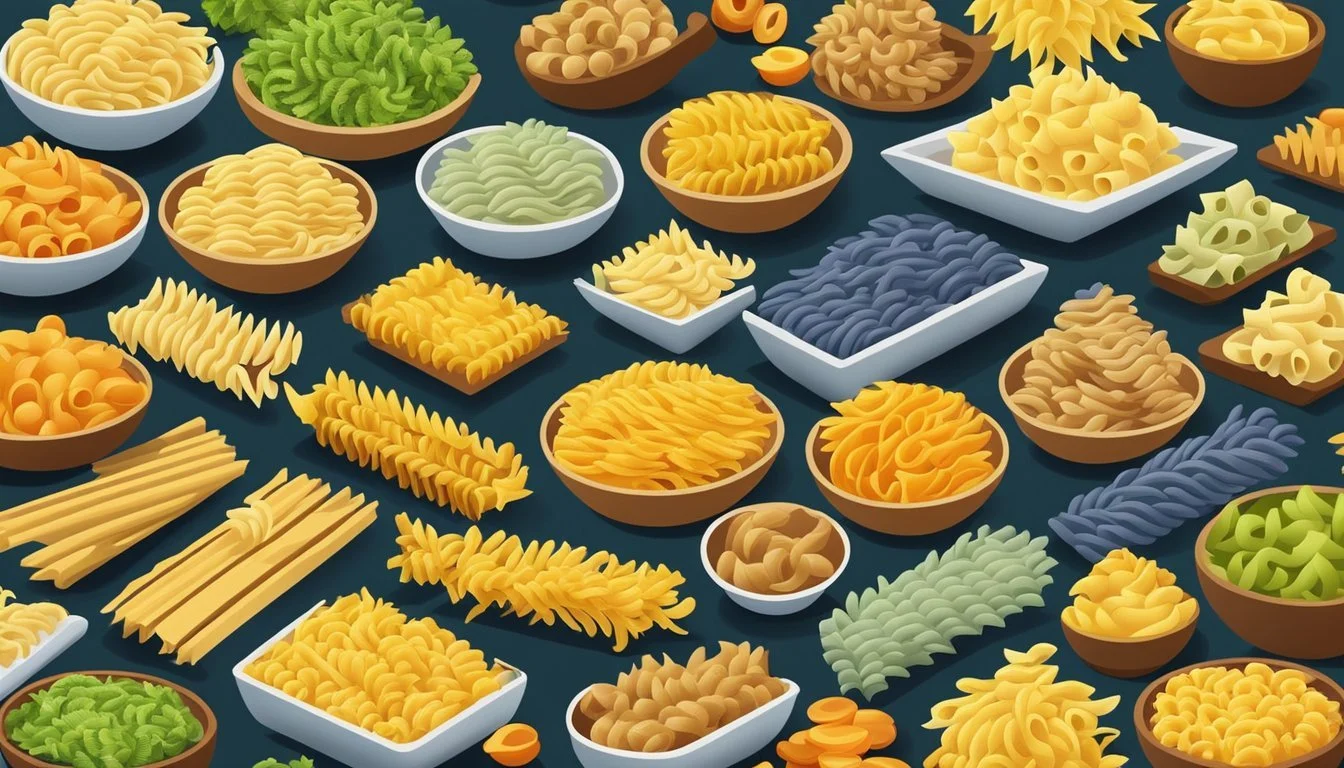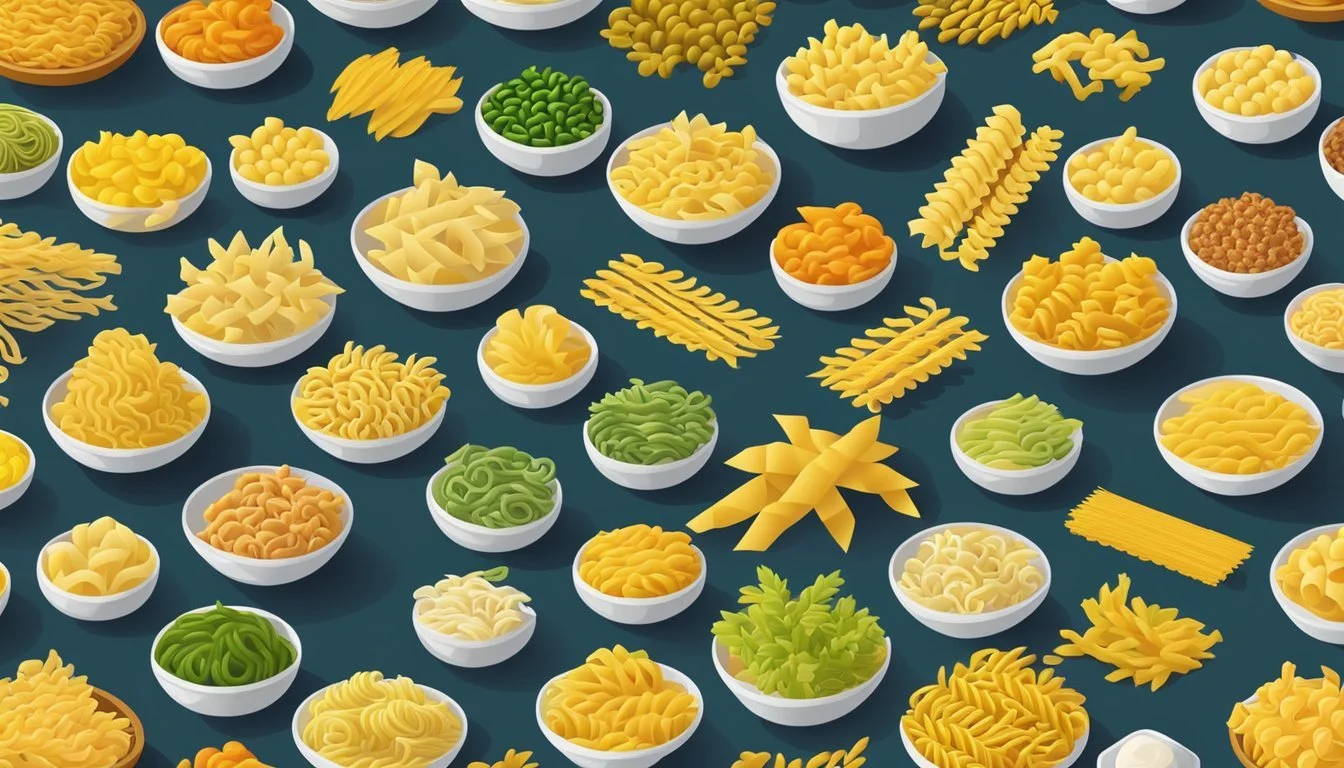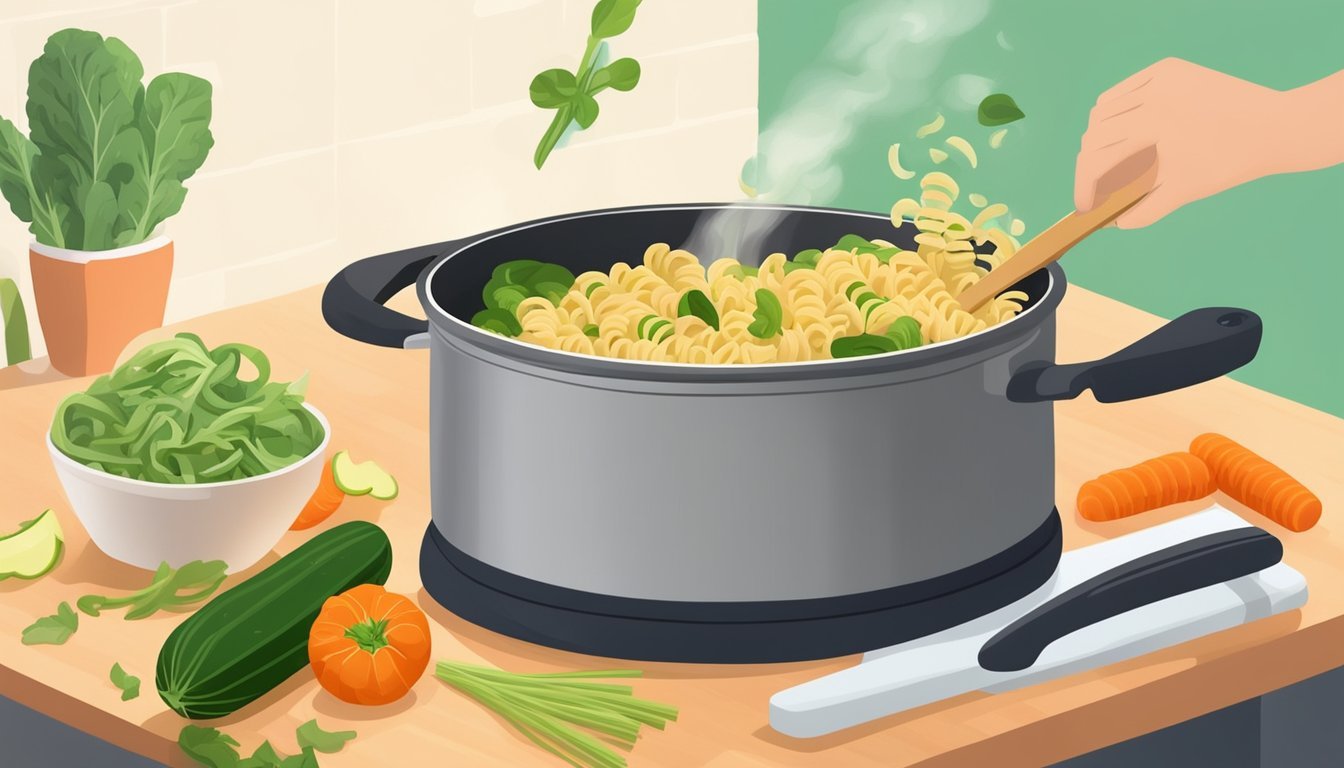Fusilli Pasta Substitutes
Top Alternatives for Your Favorite Spirals
Fusilli pasta, with its distinctive corkscrew shape, has its origins in the rich culinary traditions of Southern Italy. Renowned for its ability to cling to sauces with its spiral grooves, fusilli is a versatile ingredient suited for a variety of dishes, from salads to hearty casseroles (What wine goes well with casseroles?). Despite its popularity, there are times when fusilli may not be readily available, or when a recipe calls for a pasta (What wine goes well with pasta?) with a different texture or cooking time.
In such cases, the culinary world offers a plethora of substitutes that can stand in for fusilli without compromising the integrity of a dish. Rotini, for example, is similar in design and can be used interchangeably in most recipes. It cooks in approximately 7-10 minutes, slightly less than fusilli, making it a time-efficient alternative. Another option, gemelli pasta, differs in appearance with its twin spiral but provides a similar mouthfeel and is adept at holding robust sauces in its curves.
Fusilli Pasta Profile
Fusilli pasta is a distinctive variety of Italian pasta known for its corkscrew or spiral shape. This section explores the roots and unique features that define fusilli, giving readers a deeper understanding of this popular pasta choice.
Origins and History
Fusilli has its origins in Southern Italy, where the pasta was traditionally crafted using locally sourced durum wheat. The history of fusilli can be traced back centuries with its creation inspired by the spindle, a tool once essential in textile making. This origin speaks to the inventive application of everyday tools in pasta-making practices of the region. The primary ingredient, semolina flour, made from finely ground durum wheat, is key to the pasta's firm texture and golden color.
Characteristics of Fusilli
Fusilli pasta is recognized by its corkscrew or spiral shape, which allows it to hold onto sauces effectively. The texture of fusilli is another significant characteristic; the exterior's ridges create an ideal surface to capture both thicker and lighter pasta sauces. Typically found in dried form, fusilli made from semolina is dense and can maintain its shape and texture even when cooked al dente.
The pasta also comes in whole wheat varieties, catering to those looking for a healthier option without compromising on the ability to blend seamlessly with a myriad of sauces and ingredients. The flour used imparts a robust flavor and contributes to the pasta's toothsome quality, making fusilli a perfect candidate for a variety of dishes, from salads to casseroles.
Common Uses for Fusilli
Fusilli pasta, with its corkscrew shape and ridged texture, is designed to pair exceptionally well with a variety of sauces and ingredients. Its ability to hold onto flavors and provide a satisfying bite makes it a favored choice for various dishes.
Best Sauces for Fusilli
The spiral grooves of fusilli are excellent at trapping sauces, enhancing the flavor of each bite. Tomato-based sauces, with their rich and sometimes tangy profile, cling to the pasta, delivering classic Italian taste. In contrast, creamy sauces, like Alfredo or a rich cheese sauce, nestle into the spirals for a luxurious coating. Pesto, with its bold flavors of basil, garlic, and pine nuts, is also a perfect match, providing a vibrant and herbaceous complement to fusilli’s texture.
Tomato Sauce: Enhances the pasta with a red, robust flavor.
Creamy Sauces: Offers a smooth, velvety texture that adheres well.
Pesto: Injects a fresh, aromatic character to the dish.
Fusilli in Salads and Casseroles
The unique shape of fusilli makes it a versatile ingredient for cold pasta salads and baked casseroles. In salads, fusilli adds a chewy texture that holds up to a variety of dressings and mix-ins, from vegetables to meats. It's ideal for absorbing the flavors of salad ingredients while still maintaining its shape and integrity.
For casseroles, fusilli's ridges help it to mingle with and support the other elements in the dish. Whether mixed with cheese, vegetables, meat, or a combination of these, fusilli contributes to a well-balanced and hearty meal.
Salads: Provides a sturdy base for a diverse range of salad recipes.
Casseroles: Works to create a harmonious blend of ingredients and flavors.
Choosing Substitutes for Fusilli Pasta
When seeking alternatives to fusilli pasta, one should consider texture, flavor compatibility, and dietary needs. The ideal substitute will closely mimic the spiral shape that makes fusilli adept at clinging to sauces.
Considering Texture and Shape
Fusilli pasta's defining characteristic is its corkscrew shape, inspired by the spindle used in spinning yarn. This spiral form not only adds a visual appeal to dishes but also serves a functional purpose by trapping and holding sauces. Therefore, when selecting a substitute, one should look for pastas with similar ridges and spirals. Possible options include:
Rotini: Characterized by its similarly helical shape, rotini is comparable to fusilli in its ability to secure sauces and maintain structure in a variety of dishes.
Gemelli: Though it resembles two strands of pasta twisted together, gemelli holds sauces similarly to fusilli and contributes a delightful texture to the meal.
Flavor Compatibility
Fusilli pasta has a neutral taste that provides a foundation for a range of flavors, from the sharpness of cheese to the pungency of garlic. When choosing substitutes, consider how the pasta's taste and texture pair with the flavors of the sauce and other ingredients. Pasta types that typically pair well with various flavors include:
Rigatoni: With its ridged texture, rigatoni can hold onto rich and chunky sauces much like fusilli.
Farfalle: Also known as bow-tie pasta, farfalle's pinched middle allows it to combine well with both light and more substantial sauces.
Nutritional and Dietary Considerations
Many individuals select pasta types based on health considerations, such as whole wheat options for higher protein and fiber, or low-calorie vegetable-based noodles for dietary restrictions. Some pastas can accommodate these requirements:
Whole wheat versions of rotini or penne can offer more protein and fiber than standard fusilli.
Zucchini or cucumber noodles: For a low-calorie, gluten-free option, these vegetable noodles can be a fresh, nutritious substitute for traditional pasta.
Pasta Substitute Varieties
When searching for alternatives to fusilli pasta, it is important to consider both wheat-based substitutes that mimic the size and texture of fusilli and gluten-free or alternative grain options for dietary restrictions. Novelty shaped pastas also serve as entertaining substitutes, often retaining sauce well.
Wheat-Based Alternatives
Wheat-based pasta options provide similar taste and texture to fusilli. Rotini pasta, with its spiral shape, and penne pasta, known for its tube-like structure, are excellent for holding onto sauces. Radiatore pasta, resembling a radiator with its ridges and grooves, and gemelli pasta, which looks like two strands of pasta twisted together, also make great fusilli alternatives.
Rotini - A corkscrew-shaped pasta great for salads, soups, and casseroles.
Penne - Tubular and ridged, ideal for chunky sauces.
Gemelli - Twined pasta shape holding light and creamy sauces effectively.
Radiatore - Radiator-shaped pasta that traps pockets of sauce.
Gluten-Free and Alternative Grain Options
For those seeking gluten-free alternatives, a myriad of options are available. Pasta made from brown rice or blended with quinoa offers a texture comparable to traditional pasta and is suitable for a variety of dishes. Zucchini noodles, also known as "zoodles," provide a low-carb, vegetable-based option.
Brown Rice Pasta - Offers a chewy texture and neutral taste.
Quinoa Fusilli - A nutritious alternative retaining a texture similar to regular pasta.
Novelty Shaped Pastas
Novelty shapes, such as farfalle, orecchiette, and cavatappi, not only add a touch of whimsy to dishes but are also excellent at capturing hearty sauces. Each of these pastas has a distinctive shape that offers a unique texture and sauce interaction.
Farfalle - Known as 'bow-tie pasta', it pairs well with a variety of sauces.
Orecchiette - Small, ear-like shape that scoops up smaller bits of ingredients.
Cavatappi - A helical tube pasta known for its ability to hold rich, thick sauces.
Preparing Pasta Substitutes
When substituting fusilli pasta, one must consider the cooking techniques and how to integrate substitutes into recipes without compromising the integrity of the dish.
Cooking Techniques
Cooking pasta substitutes requires attention to detail to achieve the desired texture. Begin by boiling water in a pot, adding a pinch of salt to enhance flavor. Rotini, a close relative of fusilli, should be cooked until it is al dente, which usually takes about 7-9 minutes. Gluten-free pasta substitutes, such as those made from rice, corn, or quinoa flour, require careful monitoring because their cooking times and water absorption rates can vary.
Pasta Type Boiling Time Texture Check Rotini 7-9 minutes Al dente Gluten-free pasta As per package Test often
Allow pasta to rest for a minute after draining to ensure it doesn't become soggy.
Substitute Integration into Recipes
Incorporating pasta substitutes into recipes should be done with consideration of the shape and texture of the pasta. Baked pasta dishes (What wine goes well with pasta dishes?), for example, pair well with rotini due to its ridges that hold onto sauces and cheeses. When substituting pasta in recipes calling for fusilli, ensure the chosen alternative compliments the sauce and ingredients.
For salads or light sauce dishes:
Opt for a pasta with a shape that can trap small bits of dressing or sauce, like rotini.
For heartier sauces:
Choose a substitute that stands up to the weight of the ingredients without becoming crushed or lost in the dish.
In all cases, the substitution should maintain the balance of flavors and textures central to preparation of the original recipe.
Additional Considerations
When substituting fusilli pasta, one must consider not only the shape but also the color and flavor profile variations that could complement different sauces and ingredients. The aim is to pair the pasta substitute with the right combination to enhance the culinary experience.
Colors and Flavors
Fusilli originally hails from Southern Italy, where traditional flavors and colors prevail in its presentation. Substitutes that mirror fusilli's aesthetic appeal can be found in several hues, with green variants often incorporating spinach and red-colored varieties embracing beetroot for natural coloring. For a more dramatic presentation, black pasta made with cuttlefish ink provides a unique option.
Color Flavor Contributor Recommended Sauce Green Spinach Pesto Red Beetroot Tomato-based Black Cuttlefish Ink Cheeses, Seafood
The chosen pasta should not only match the fusilli in shape but should also bring complimentary flavors to the dishes, such as nutty notes that will harmonize with pesto's nuts and cheeses.
Customizing Pasta Substitutes
Beyond the pre-made options available, one can customize their pasta substitutes through fresh, homemade variations. This allows for precise adjustments of flavors and colors to best suit the envisaged dish. Whether it’s a plain variety or one that infuses flavors such as herbs and vegetables, creating a substitute at home opens up a range of possibilities.
To tweak the taste for specific dishes, incorporations like pesto for a deeply herbaceous and nutty flavor or a simple tomato-based sauce for a classic profile can be considered. Variations in the pasta itself, from adding spinach for a vibrant green hue and subtle flavor to experimenting with red beetroot for sweetness and color, cater to both the visual and taste aspects of fusilli pasta dishes.





